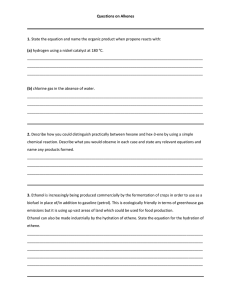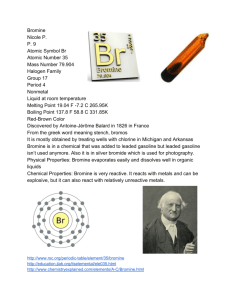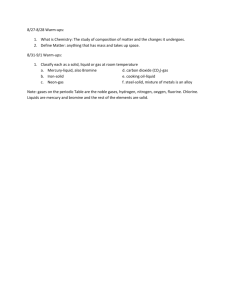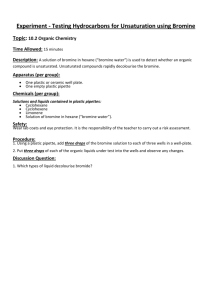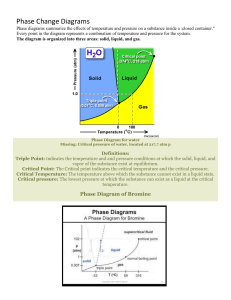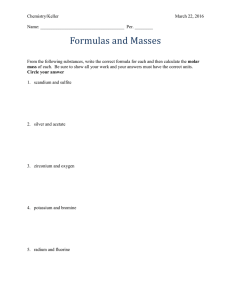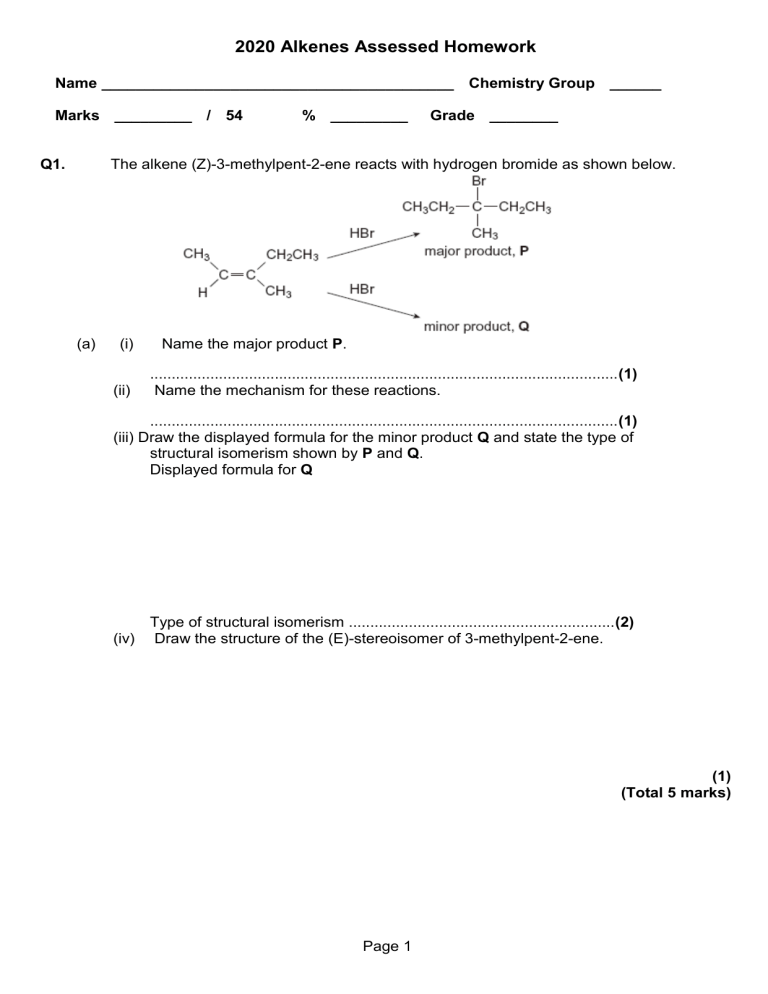
2020 Alkenes Assessed Homework Name _________________________________________ Chemistry Group ______ Marks _________ / 54 Q1. % _________ Grade ________ The alkene (Z)-3-methylpent-2-ene reacts with hydrogen bromide as shown below. (a) (i) (ii) Name the major product P. .............................................................................................................(1) Name the mechanism for these reactions. .............................................................................................................(1) (iii) Draw the displayed formula for the minor product Q and state the type of structural isomerism shown by P and Q. Displayed formula for Q Type of structural isomerism ..............................................................(2) (iv) Draw the structure of the (E)-stereoisomer of 3-methylpent-2-ene. (1) (Total 5 marks) Page 1 Q2.The alkene 3-methylpent-2-ene (CH3CH=C(CH3)CH2CH3) reacts with hydrogen bromide to form a mixture of 3-bromo-3-methylpentane and 2-bromo-3-methylpentane. (a) The alkene 3-methylpent-2-ene (CH3CH=C(CH3)CH2CH3) exists as E and Z stereoisomers. Draw the structure of Z-3-methylpent-2-ene. (1) (b) Name and outline the mechanism for the formation of 3-bromo-3-methylpentane from this reaction of 3-methylpent-2-ene with hydrogen bromide. Explain why more 3-bromo-3-methylpentane is formed in this reaction than 2-bromo-3-methylpentane. ............................................................................................................................. ............................................................................................................................. ............................................................................................................................. ............................................................................................................................. ............................................................................................................................. ............................................................................................................................. ............................................................................................................................. ............................................................................................................................. ............................................................................................................................. ............................................................................................................................. ............................................................................................................................. ............................................................................................................................. (7) (Total 8 marks) Page 2 Q3. It is possible to convert but-1-ene into its structural isomer but-2-ene. (a) State the type of structural isomerism shown by but-1-ene and but-2-ene. ........................................................................................................................ (1) (b) The first stage in this conversion involves the reaction of hydrogen bromide with but-1-ene. CH3CH2CH=CH2 + HBr CH3CH2CHBrCH3 Outline a mechanism for this reaction. (4) (c) The second stage is to convert 2-bromobutane into but-2-ene. CH3CH2CHBrCHCH3 + KOH CH3CH=CHCH3 + KBr + H2O Outline a mechanism for this reaction. (3) (Total 8 marks) Page 3 Q4.A student carried out an experiment to determine the number of C=C double bonds in a molecule of a cooking oil by measuring the volume of bromine water decolourised. The student followed these instructions: • Use a dropping pipette to add 5 drops of oil to 5.0 cm3 of inert organic solvent in a conical flask. • Use a funnel to fill a burette with bromine water. • Add bromine water from a burette to the solution in the conical flask and swirl the flask after each addition to measure the volume of bromine water that is decolourised. The student’s results are shown in the table below. (a) Experiment Volume of bromine water / cm3 1 39.40 2 43.50 3 41.20 In a trial experiment, the student failed to fill the burette correctly so that the gap between the tap and the tip of the burette still contained air. Suggest what effect this would have on the measured volume of bromine water in this trial. Explain your answer. ........................................................................................................................ ........................................................................................................................ ........................................................................................................................ ........................................................................................................................ (2) (b) Other than incorrect use of the burette, suggest a reason for the inconsistency in the student’s results. ........................................................................................................................ (1) (c) Outline how the student could improve this practical procedure to determine the number of C=C double bonds in a molecule of the oil so that more consistent results are obtained. ........................................................................................................................ ........................................................................................................................ ........................................................................................................................ ........................................................................................................................ ........................................................................................................................ ........................................................................................................................ ........................................................................................................................(4) Page 4 (d) The oil has a density of 0.92 g cm–3 and each of the 5 drops of oil has a volume of 5.0 × 10–2 cm3. The approximate Mr of the oil is 885. The concentration of bromine water used was 2.0 × 10–2 mol dm–3. Use these data and the results from experiment 1 to deduce the number of C=C double bonds in a molecule of the oil. Show your working. (5) (Total 12 marks) Q5.Dodecane (C12H26) is a hydrocarbon found in the naphtha fraction of crude oil. Dodecane can be used as a starting material to produce a wide variety of useful products. The scheme below shows how one such product, polymer Y, can be produced from dodecane. (a) Name the homologous series that both C2H4 and C4H8 belong to. Draw a functional group isomer of C4H8 that does not belong to this homologous series. Name ........................................................................................................... Functional group isomer (2) (b) (c) Identify compound X. ........................................................................................................................(1) Name polymer Y. ........................................................................................................................(1) Page 5 (d) Reaction 1 is an example of thermal cracking and is carried out at a temperature of 750 °C. State one other reaction condition needed. (e) ........................................................................................................................(1) Reaction 2 is exothermic. A typical compromise temperature of 200 °C is used industrially for this reaction. Explain the effect of a change of temperature on both the position of equilibrium and the rate of reaction, and justify why a compromise temperature is used industrially. ........................................................................................................................ ........................................................................................................................ ........................................................................................................................ ........................................................................................................................ ........................................................................................................................ .....................................................................................................(6)(Total 11 marks) Q6. Propene reacts with bromine by a mechanism known as electrophilic addition. (a) Explain what is meant by the term electrophile and by the term addition. Electrophile .................................................................................................. ...................................................................................................................... Addition ........................................................................................................ (b) ......................................................................................................................(2) Explain why bromine, a non-polar molecule, is able to react with propene. ...................................................................................................................... ...................................................................................................................... (c) ......................................................................................................................(2) Outline the mechanism for the electrophilic addition of bromine to propene. Give the name of the product formed. Mechanism Name of product ...........................................................................................(5) (d) The polymerisation of propene to form poly(propene) is an important industrial process. Name the type of polymerisation involved. ......................................................................................................(1)(Total 10 marks) Page 6
